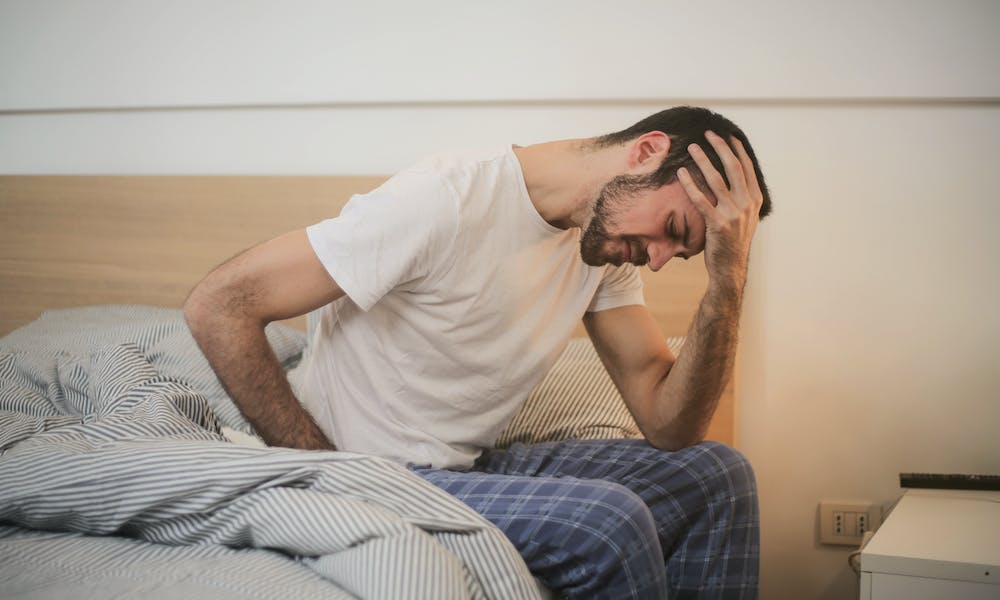Hip pain can be a major drag, especially when it strikes during long work hours. But before you resign yourself to suffering through the day, consider this: your office chair might be the culprit! The good news is, with a few simple ways on how to adjust your office chair for hip relief, you can transform your workplace from a pain-inducer to a haven of comfort.

What is Hip Pain?
Hip pain is a term for discomfort or pain felt around the hip joint, where the thigh bone connects to the pelvis. It can be caused by a variety of factors, including injuries, overuse, arthritis, bursitis, tendinitis, and structural issues.
The severity of symptoms can range from mild to severe and may include stiffness, limited mobility, and aching or sharp pain. Treatment options depend on the underlying cause but may involve rest, physical therapy, medications, or surgery. If your hip pain persists or worsens, seeking prompt medical evaluation is crucial.

How to Adjust Your Office Chair to Relieve Hip Pain
In this guide, we’ll walk you through the essential steps to setting up your chair for optimal hip comfort and support, helping you reclaim your work day without the ache.
1. Get Your Seat to the Right Height
Adjusting your chair height is the first and most important step to alleviate hip pain. When your chair is too low, it causes your legs to bend upwards at the hips, increasing pressure on these joints and making sitting uncomfortable.
Furthermore, it promotes slouching forward, leading to back pain and other problems. It also encourages sitting with crossed legs, another significant contributor to hip injuries.
Ideally, your chair height should be almost the same as the height of your knees when seated. This allows your knees to bend at a 90-degree angle, ensuring your thighs are parallel to the desk surface and your feet flat on the floor.
This reduces poor posture tendencies, alleviates pressure on your back, and allows for a wider range of motion without limitations. If possible, adjust your desk or workspace height to further optimise comfort.
By implementing these adjustments, you can create a more ergonomic work environment and minimise your risk of developing hip pain. Remember, listening to your body and taking breaks to move around are also crucial for maintaining good posture and preventing pain.

2. Lumbar Support Adjustment
Lumbar support is a crucial component of office chair ergonomics, specifically designed to support your lower back. Since lower back support is essential, it would be helpful to compare between mid back or high back office chairs and determine which is best fits your comfort needs.
This plays a vital role in maintaining proper posture and preventing pain, as extensively discussed in this article. Slouching throws your entire body off alignment, leading to pain in your joints, muscles, and spine.
This natural spinal curve causes a slump, potentially leading to further slouching or leaning back depending on your individual spine curvature and desired movement. Any of these issues can throw your body entirely out of alignment.
3. Modifying the Angle of Your Seat
While adjusting your chair height is crucial, the seat pan’s angle plays an equally vital role in optimising comfort and mitigating hip pain. Ideally, you want a slight downward slope from back to front, as if the seat were gently urging you forward.
Look for a chair with an adjustable seat pan angle. If possible, tilt it slightly downwards. This ensures your feet remain flat on the floor and prevents the chair’s front edge from pinching your nerves or blood vessels in your legs, contributing to discomfort.
However, if your chair lacks an adjustable seat angle, fret not! A simple solution is using a seat pillow or an angled support pillow to prop yourself up slightly. Not only does this address the angle issue, but it also provides additional cushioning for chairs that become uncomfortable during extended sitting periods.

Why Our Hips Matter
From standing and sitting to walking and exercising, our hips play a pivotal role in our daily lives. They’re like the shoulders of the lower body, but their importance goes far beyond that. They’re the foundation of our movement, responsible for balance, mobility, and comfort in everything we do.
Unfortunately, our hips weaken as we age, making hip replacement a common surgery for older adults. However, it doesn’t have to be this way. By taking the time and effort to correct our posture and adjust our furniture now, we can prevent long-term damage and costly procedures down the line.
How can your office chair influence hip pain?
A non-supportive office chair can wreak havoc on your tendons and ligaments, contributing to hip pain. That’s why finding a chair that provides proper support for your hips and lower back is crucial.
While ergonomic chairs are a step in the right direction, they may not be the ultimate solution for everyone, especially those suffering from hip osteoarthritis.
For those seeking targeted relief, consider a saddle chair. Saddle chairs offer a unique design that positions the hips in a more open angle, reducing pressure on the joints and promoting proper posture. This can significantly alleviate hip pain and improve comfort for many users.

Bottomline
Risks When Your Chair Is Too High
As published in the American Journal of Applied Sciences, a chair too high for your feet creates an awkward posture, increasing risk of MSDs like fatigue, swelling, pain, numbness, and poor circulation. OSHA warns this is due to scooting forward and losing backrest support.
This study was conducted by researchers Kiat P, Jee, Siong K, Lim, Yee S. entitled Development of Ergonomics Guidelines for Improved Sitting Postures in the Classroom Among Malaysian University Students.
Risks When Your Chair Is Too Low
Your chair is probably too low when your knees are higher than your hips. This position puts your hip joints in an extreme degree of flexion, which most people’s backs can’t handle well due to limited hip muscle flexibility. A low chair can cause low back pain.
Investing in an ergonomic office chair with ample padding helps protect your hips and reduces discomfort, making it a worthwhile choice.
- 6 Benefits of Using Seat Cushion - February 20, 2024
- 4 Tips to Fix Uncomfortable Chair - February 19, 2024
- How to Position Lumbar Support on Ergonomic Chair - February 15, 2024

